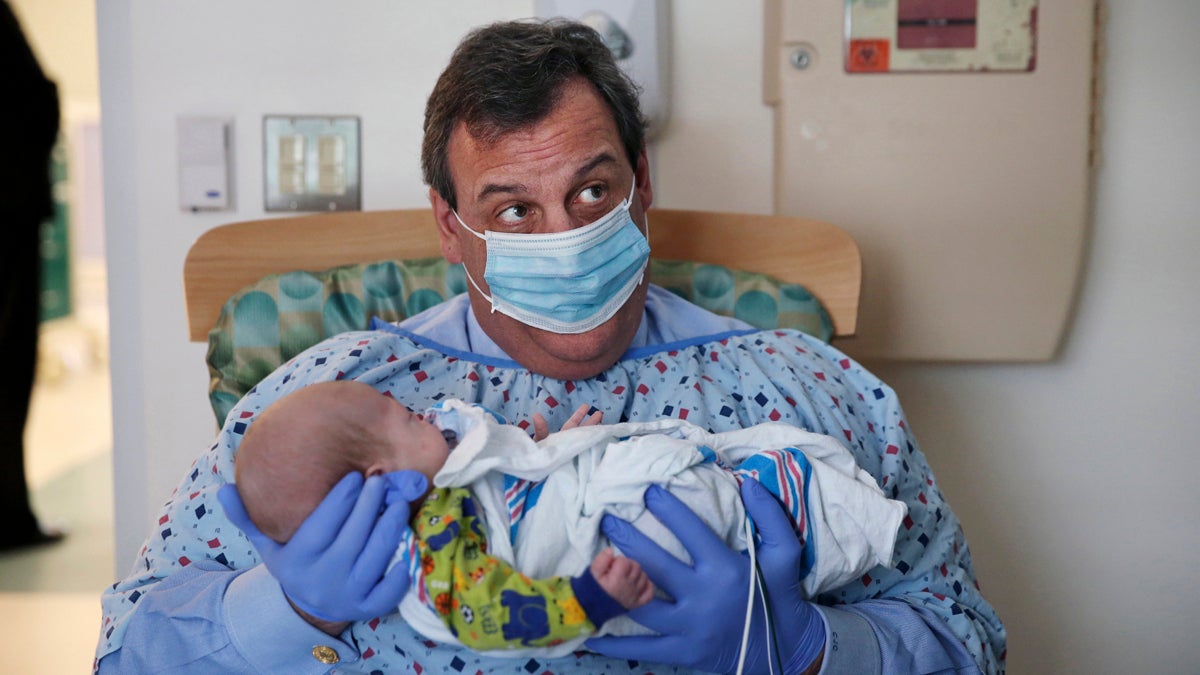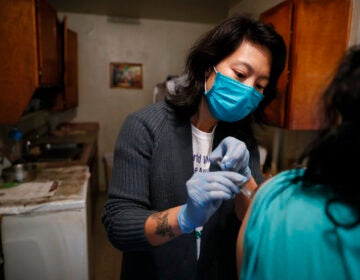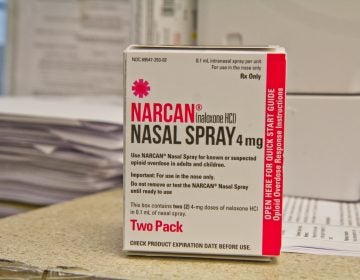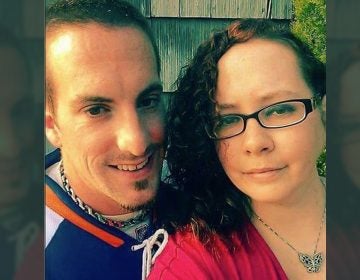Christie: Doctors key to cutting through opioid epidemic — yet some share blame

In this Tuesday, Dec. 6, 2016, file photo, New Jersey Gov. Chris Christie holds a 49-day-old baby boy being treated for neonatal drug withdrawal after his mother took opioids during pregnancy, at the Neonatal Intensive Care Unit at Jersey Shore University Medical Center in Neptune Township, N.J. (Mel Evans/AP Photo)
New Jersey Gov. Chris Christie’s latest stop on a state-wide anti-opioid abuse tour was on Monday, in Princeton. Nearly 200 health care big-wigs from around the state — community clinics, hospitals, emergency medicine — attended the New Jersey Hospital Association’s annual substance abuse and mental health summit where he was the keynote speaker.
“You’re the ones that see the death,” said Christie, addressing the audience. “You’re the ones who have to look at the mothers and fathers and husbands and wives and sisters and brothers in the eye, and tell them, ‘Your loved one died.'”
President Trump recently tapped Christie to lead a new federal commission on combating addiction, with a focus on the opioid crisis. At the summit, he said the state must improve prevention and treatment — from the street, to the emergency room, to rehab. As Christie outlined in his 2017 State of the State address, he’s making this issue his top priority in his final year as governor. (He is term-limited and voters will elect his successor this fall.)
Christie said the opioid crisis is too big to be bogged down by partisan politics. He paused to emphasize the toll that the opioid crisis has taken on first responders, such as police or E.M.T.’s who administer the opioid antidote Narcan, and nurses who stay by an addict’s side in the emergency room.
“You have to deal with the trauma that it not only creates for the family, but for those who are delivering the news, as well,” he said.
Yet he also emphasized the importance of educating medical providers about the opioid epidemic.
“It’s appalling to me that there’s no requirement in medical schools’ curriculums to teach health care providers about the dangers of prescribing these drugs,” he said.
Four out of five heroin addicts start on medicine they get from a physician, he stated. And in 2012, he added, 259 million prescriptions for opioid painkillers — such as Oxycontin or Percocet — were written in the U.S.
“We are the most prescription drug sedated nation in the world,” Christie said. “That’s unacceptable.”
In a room of addiction professionals both visibly weary and encouraged by the day’s speeches, a few seats were saved for celebrities: Dr. Drew Pinsky, who has his own TV and radio shows, and also Bob Forrest, a punk rock musician whose struggles with drug addiction inspired a second career as a drug counselor — including leading interventions on Celebrity Rehab, a VH1 reality television show.
Pinksy’s goal for the summit, he said, was to join doctors in conversation. He shared data and meta-analyses suggesting that 12-step programs, such as Alcoholics Anonymous , actually work. More data is needed for Narcotics Anonymous, he said. He talked about why the 12-step model can really help some addicts get clean.
“For some people, it’s the fellowship … the trusting closeness, and their sponsor. For other people, it’s compassion.” He added that other patients find the predictable structure of the program helpful, comparing it to Cognitive Behavioral Therapy.
“They know what they’re doing. They have experience doing it. They know what it’s like to be in that position. They can connect very effectively with those patients,” Pinksy said.
As a part of the bigger system, 12-step programs do provide important coverage for some patients, Pinsky explained. There’s a large financial benefit to using this model.
“There’s not enough health care dollars on Earth to cover the needs of those patients when they’re in the throes of those early parts of treatment, and can’t get into a treatment facility, or don’t have adequate coverage for it,” he said.
Pinksy pointed out a distinct draw-back of addicts who go through 12-step programs: lack of clinical oversight. A potential answer to this is the state’s new Recovery Coach program, which was launched in South Jersey in 2015. At the summit, Christie announced the initiative will expand across the state, in all 21 counties.
The program pairs people in recovery with those looking to get sober. After an addict collapses and is revived with naloxone, the next step is the hospital. Once they start breathing again, said Gov. Christie, there’s time to intervene.
That’s Christie’s goal for the Recovery Coach program: it meets addicts where they are, in the emergency room. It brings addicts in recovery into hospitals to do difficult, life-saving work: to convince addicts to accept help.
“Give people permission [to get help] from someone who knows and relates to them,” Christie said. “There is light at the end of the tunnel, and it’s not just an oncoming train. And only an addict can tell another addict that with credibility.”
Recovery coaches are people in recovery themselves, who have been sober for at least four years. Their job is to follow-up with the people they first meet in the emergency room, and guide them through treatment and rehab. Coaches are there to help manage stress: relationships, jobs, housing, and family issues.
“The addict would say, you have no idea what I’m going through. You’ve never been there. I’m not listening to you,” said Christie. “We know — any one of us that’s dealt with addicts — [they] have that attitude, often. This is someone who can say, ‘Oh yeah? I’ve been there. And you want to be where I am.'”
Christie continued to push people to recognize addiction as a disease.
“It’s nothing to be ashamed of. … It is a disease that can’t be cured, but can be treated. And people who have this disease are no different than people who have heart disease, or diabetes, or cancer,” he said.
Sit down with a diabetic, or someone struggling with heart disease, and they’ll tell you how hard it is to think about their disease as their fault, said Christie.
The key to extinguishing shame, Christie said, is to make it okay to speak up about addiction. He recalled a family he’d met recently at an event in New Hampshire.
“This young man’s parents didn’t even know he had a problem,” Christie said. Eight days before, the father told the governor, their son died from a heroin overdose. He’d kept his addiction a secret from his family, though he’d overdosed and been admitted to the emergency room five times before.
“And they find out when they come to retrieve their 20-year-old son’s body,” said Christie. “This same doctor had reversed him with Narcan.” The sixth time, as Christie recalled the father say, “It didn’t work.”
The story of their son, an Ivy League student at Dartmouth College, should be a wake-up call, Christie said. “This young man hid his disease from his parents because of shame. … And he died because of it.”
Such change is needed, Christie emphasized, because state-wide opioid abuse has reached epidemic levels. He cited data from the Centers for Disease Control, which reports that more than 52,000 people died from drug overdoses in the U.S. in 2015, with 33,000 of those deaths attributed to opioids. That means it rivals the death toll from car crashes and guns.
WHYY is your source for fact-based, in-depth journalism and information. As a nonprofit organization, we rely on financial support from readers like you. Please give today.





